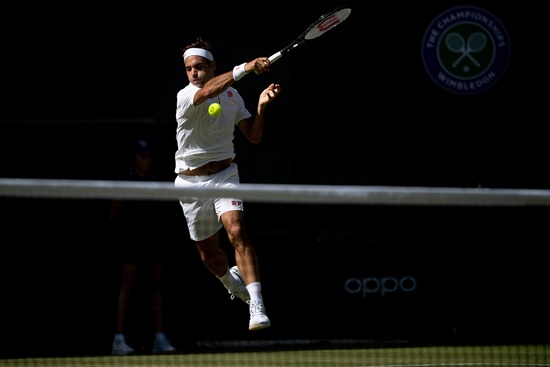새로 익히는 드릴이 자연스럽게 표출될 때(의식적인 노력없이)야 연습을 멈춰야 함
나쁜 습관이 좋은 습관으로 변하는 단계가 그냥 되는 것이 아닌, 4단계를 거친다.
1단계.. 뭔가 잘못 되었는데, 그 원인을 아직 모른다.
2단계.. 잘못된 것을 발견.. 새로운 것을 익힐려고 노력.. 그러나 아직은 새로운 것이 어색
3단계.. 새로운 것에 대한 많은 연습으로 인해 이젠 좀 편해지고 재현도 가능.. 하지만 아직까진 의식을 해야 그 행동이 나옴
4단계.. 좋은 습관이 이젠 아무 의식을 하지 않아도 자연스럽게 나옴.. 이것이 궁극적인 목표
3단계에서 4단계로는 [의식적으로(처음부터 무의식으로 할 순 없죠) 과잉학습]을 하게 되면 어느 날 의식함이 없이 행동이 가능
이런 스타일의 글을 개인적으로 아주 좋아하는 편인데,
일본넘들은 쥐어짜는 정신력을 강조하는데, 미국넘들은 존재하고 있었지만 우리가 정확하게는 알지 못했던것을 논리적으로 설명을 해주는 것이 참 좋습니다.
이런 글을 읽다보면, 미국넘들이 잘 사는지 이해가 되곤 합니다.

Sports coaches have come to recognise that competency develops through four recognised stages. Understanding the stages of the competency cycle is a key aspect of mastering the inner game of tennis. It will also help you persist with your efforts to improve your tennis strokes.
어떤 것이 늘었다는 것은 나쁜 것이 좋게 되었다는 의미인데,, 그것은 일반적으로 4단계를 거치면서 이루어진다. 이 4단계는 스트로크 연습에서도 적용되지만, inner game of tennis를 향상시키는도 그래도 적용이 된다.
The four stages are described below.
Stage 1: Unconscious incompetence
Before you start to improve a tennis stroke, you are often unconscious of what you are doing wrong. It may have to do with your swing, your stance, your grip or the way you address the tennis ball.
In this stage, you are not conscious of your specific incompetence though you may experience a sense of unease or dissatisfaction with the results of your effort. This dissatisfaction leads to the desire to improve the way you play tennis.
뭐가 잘못된 건지는 모르겠지만, 뭔가 잘못되었음을 느끼는 상태
Stage 2: Conscious incompetence
Through your reading, coaching or observation, you have now become aware of what you are doing wrong. You may have been watching a slow motion video on YouTube and seen how Federer plays his backhand. You have identified an area for improvement, e.g. improving the way you grip the racquet to complete a backhand stroke.
You are now consciously incompetent, you are aware of your specific incompetence in relation to gripping the racquet for a backhand. You start to change your grip in practice and it feels very uncomfortable and you are not successful initially. One of the challenges at this stage is to unlearn established, unconscious habits.
It is important to persist despite the discomfort and frustration. This is where so many people drop out, give up and go back to their old way of doing things.
잘못된 것이 무엇인지 알고, 나쁜 습관을 좋은 습관으로 바꿀려고 노력하는 단계..
좋은 습관이지만 아직은 많이 어색한 상태
Stage 3: Conscious competence
If you persist with practising a better way (e.g. improving the way you grip your racquet for a backhand shot), you will start to feel comfortable with the new grip. You will also start to be more successful with your backhand shots.
The improvement in your backhand gives you positive reinforcement to keep up your practice.
You still have to make a conscious effort but you are acquiring the necessary competence, you are becoming consciously competent.
좋은 습관이 이젠 제법 몸이 붙었고, 실전에서도 제법 되는 편이지만, 그 행동을 할려고 의식적인 노력을 해야,, 그 행동이 가능한 상태
Stage 4: Unconscious competence
This is the stage where the new backhand grip becomes a part of your normal play, you do not have to think about it as you just do it naturally. It requires no conscious effort.
The old saying, 'practice makes perfect' is emphasising this stage of achievement. If you persist with conscious practice, eventually you will overcome old habits and replace them with new ones that are equally unconscious.
좋은 습관을 이젠 의식하지 않고도 자연스럽게 나오는 상태..좋은 습관을 의식적으로라도 계속 연습을 한다면,, 어느 순간 그것이 무의식적으로 행해질 때가 있다.
그 때,, 그 기술은 몸에 '배였다'고 할 수 있다.이제 그 기술은 자연스럽게 나오는 것이므로 많은 연습을 하지 않아도 된다.
페더러가 인터뷰에서 한 말..나달의 탑스핀 공격에 대응하기 위하여 원핸드 백핸드를 업그레이드 시키기 위해 엄청 많이 연습했다. 나달이 나에게 "새로운 도전 정신을 불어 넣어줬다"고 ...
경쟁자 혹은 도전해야 할 목표가 명확해지면 한층 발전할수 있는 계기가 되는것 같습니다.
[테니스는 어떻게 완성 되는가?]
-
정말 느낌이 와닿는 좋은 내용입니다. 스윙이 완성되어가는 과정을 다시한번 느끼게 되어 기쁩니다.